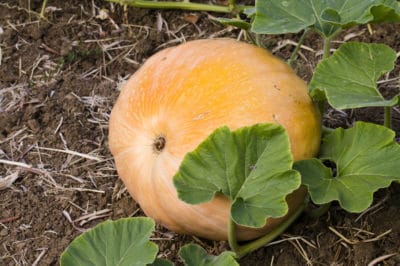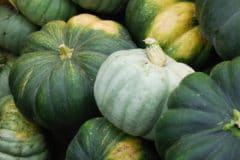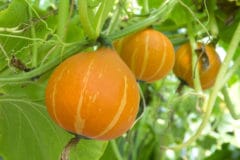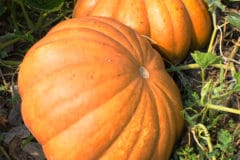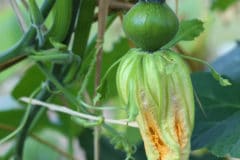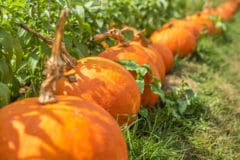Yellow Pumpkin Varieties
Although the majority of pumpkin varieties are varying shades of orange, different varieties of pumpkins can be colored blue, white, green and yes, even yellow.
Typically, a yellow pumpkin is a hybrid, meaning it is a combination of two or more varieties cross-bred with one another. The most popular hybrid that produces a pure yellow pumpkin is called the Sunlight Hybrid.
Another popular yellow pumpkin that is not a hybrid is a French breed called the Paris, Yellow Pumpkin. For pumpkin purists, this is the ideal pumpkin; it is an heirloom fruit, not a hybridized version, with yellow flesh and skin.
Immature Pumpkins
Most pumpkin varieties start out as a light green fruit, progress to a dark green as they mature, and finally turn orange as harvest time approaches. However, some types like the Giant pumpkin are a light yellow when they are first growing and then transition to orange before harvest.
Other Reasons for Yellow Pumpkins
There could be a variety of reasons why you expected orange pumpkins but got yellow ones instead. For example:
- The seed packet was labeled wrong.
- If you bought seedlings from a nursery, they were not certain of the variety.
- You unwittingly purchased a variety with a yellow gene that will still turn orange before harvest.
- Cross-pollination occurred prior to packaging.
If you planted seeds that you saved from a previous year, cross-pollination could also be the reason for yellow pumpkins. Planting pumpkins too close to other squash can result in cross-pollination, which can affect the color and even shape of your pumpkins.
Can I Eat Yellow Pumpkins?
Whether you intentionally or accidentally ended up with yellow pumpkins, you may wonder whether they are edible or not. Take heart; any pumpkin you can grow, you can eat! However, beware that unless the yellow pumpkin is a specially designed hybrid as opposed to an accidental one, the taste and shape may be different than that of a traditional pumpkin.
Regardless of whether your yellow pumpkins are by design or by accident, they make a nice change from the traditional orange pumpkins you see everywhere. If nothing else, your garden may be the talk of all the neighbors!
